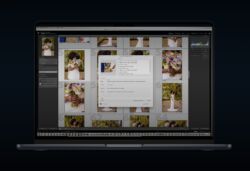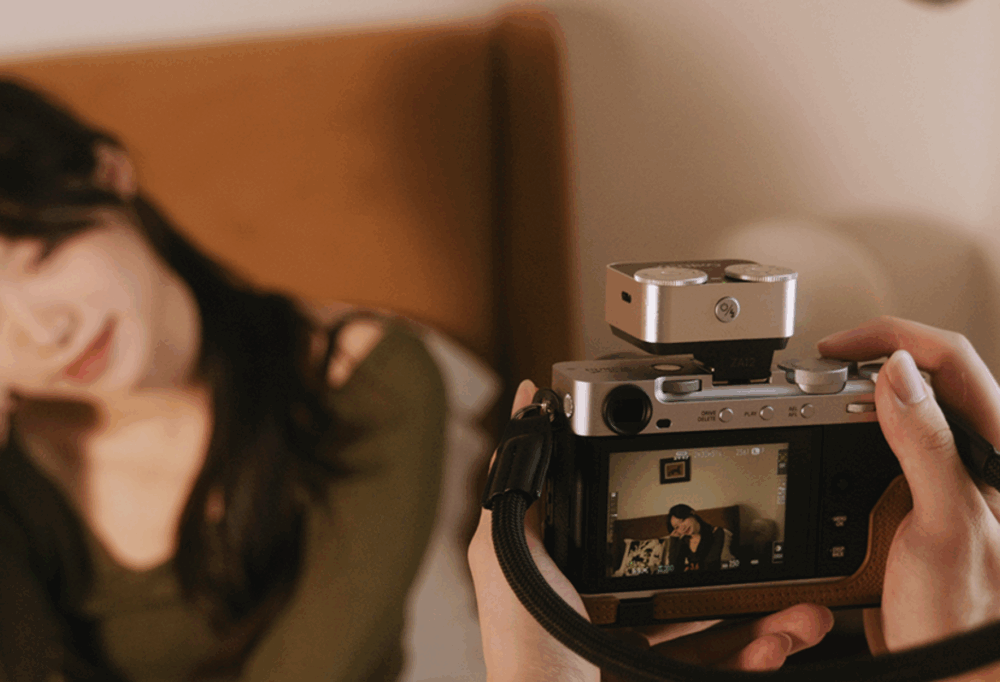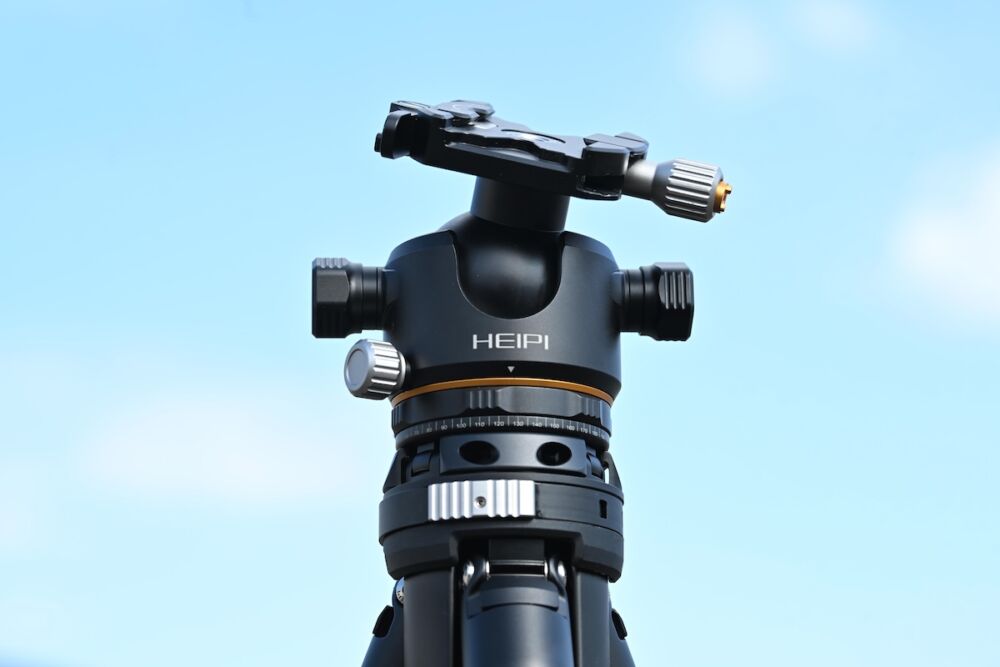The Canon R5 was the first full-frame mirrorless camera to offer 8K video. In fact, it is one of the only cameras in its class to offer 8K RAW! This feature might not be on your wishlist if you aren’t a high-end videographer, but it is a bold statement by Canon about where their EOS R5 stands: this is a flagship-level camera that is made for many different types of working professionals.
In my official Canon R5 review, I’m going to tell you the truth about this camera. How good is it? What do the images look like? Does it overheat? Is it as good as Sony or Nikon? Is it worth the $3,900 investment?

The short answer is, yes, this camera is worth it. Not only is it the best 5-series camera that Canon has ever made, but it’s also a strong competitor to the Nikon and Sony equivalents. Depending on the type of photography you do, your creative style, and what your budget is, however, I may recommend any of these main three competing options. Read on to find out more!
Canon R5 Specifications

- SENSOR: 45 megapixels, CMOS sensor, DIGIC X processor
- LENS MOUNT: Canon RF (full-frame mirrorless)
- STILL IMAGES: 8192 x 5464 pixels .CR3 raw, (lossless) cRAW (lossy compressed)
- VIDEO:
8K: 8K RAW (8192 x 4320 @ 30p / 1,300 Mbps, MOV, H.265, Linear PCM)
4K: (4096 x 2160 @ 120p / 1,880 Mbps, MOV, H.265, Linear PCM) - ISO: 100-51200 (50-102400 expandable HI/LO)
- AUTOFOCUS: 1053-point, Phase-Detect Dual-Pixel on-sensor autofocus
- SHOOTING SPEED (FPS): 20 FPS electronic, 12 FPS mechanical
- SHUTTER SPEEDS: 30 sec to 1/8000 sec, Bulb, 1/200 sec flash sync
- STABILIZATION: IBIS, up to 5 stops
- VIEWFINDER: 5.76 MP EVF, 100% coverage, 0.76x magnification
- LCD: 3.2″ fully articulated TFT touchscreen LCD
- CONNECTIVITY: USB3.2 (10Gbit, type C) HDMI, Wifi, bluetooth, headphone & microphone jacks
- STORAGE: Dual card slots; CFexpress (CFe) SD (UHS-II)
- BATTERY: LP-E6NH, USB-PD chargeable (high-speed in-camera charging)
- BODY CONSTRUCTION: Metal alloy, fully weather-sealed
- SIZE: 138 x 98 x 88 mm (5.43 x 3.84 x 3.46 in.)
- WEIGHT: 738 g (1.63 lb / 26.03 oz) (with battery)
- PRICE: $3,899 (body only) $4,999 (body w/ RF 24-105mm f/4 L)
(B&H | Amazon | Adorama | MPB)
Canon EOS R5 VS Canon EOS R6 | Which Is Right For You?

Before we dive into the standard format sections of this review, let’s answer one big question very quickly. The Canon EOS R5 and EOS R6, outwardly, appear to be virtually identical. They also both have very impressive specs, and the only big difference seems to be that the Canon R5 has 45 megapixels, while the Canon R6 has “only” 20 megapixels.
I say “only” in quotes, because, honestly? For most types of photography, 20 megapixels has been plenty for many years now. However, yes, the short answer of which camera to get involves simply asking yourself if you need 45 megapixels. Do you make huge prints, and/or do a lot of cropping? (Or do you do 8K video/time-lapse work?) If you don’t, then you can save more than a thousand dollars by going with the ~$2,500 Canon EOS R6, and enjoy it’s flagship-level autofocus, shooting speed, and respectable 4K video.
There are a few more subtleties, however, which you should be aware of before you jump on one camera or another. At our wedding photography studio, we have actually already had extensive experience with both the R5 and the R6, and we can say unequivocally that the cameras *feel* like they’re operating on different levels. It’s hard to pinpoint exactly what the difference is, but, unfortunately, it seems like the more expensive Canon EOS R5 does, in fact, deliver slightly better autofocus performance, and slightly better overall colors and tones from the sensor.

How is this possible, if the cameras are clearly from the same generation/class in overall technology? You might expect identical “color science”… (Honestly, the word “science” really doesn’t belong here at all, since it’s a totally subjective thing in most photographers’ worlds.) Well, it has to do with the vastly different sensors themselves. Basically, the R5 does have a better sensor in ways besides just the number of pixels. The dynamic range is slightly better in general, and those extra pixels appear to make dual-pixel AF slightly better, too.
Unfortunately, we aren’t able to definitively quantify these differences, because honestly, both cameras are incredible performers, and we only sense subtle differences when we are really pushing the envelope of what is possible in highly demanding conditions such as low-light wedding photojournalism, or dynamic, harsh light wedding portraits. So, if that sounds like you, you might want to save up for the Canon R5 even if you don’t think you need 45 megapixels.
Canon R5 Review | Who Should Buy It?

As the Canon 5-series camera that has come the closest to $4,000 after 5 generations, this is absolutely a serious investment, a high-performance tool.
Do you really need it? I don’t like to phrase the question like that, but think of it this way: The EOS R6 is an excellent camera for about $2.5K, and who knows, maybe in 6-12 months Canon will announce a Canon EOS RP mk2 for just $1,299, or a Canon EOS R5s with 60-80 megapixels for “just” $3K? Depending on the type of photography you do, the Canon R5 might not be the perfect fit for you, even though it’s a great camera.
You might have enough money to invest in the EOS R5, but as every good photographer will tell you, the lenses are even more important than a camera body! So, unless you already own literally every lens you could possibly want, I will always encourage you NOT to buy “more camera than you need”.
Wedding & Portrait Photography

Simply put, the Canon EOS R5 is the full-frame mirrorless camera that Canon portrait and wedding photographers were waiting for. Unlike the first generation Canon RF-mount camera, the EOS R, the R5 is a professional, flagship-grade camera. The image quality is a huge leap forward for Canon when it comes to challenging lighting conditions, (dynamic range) and the low-light autofocus is highly reliable.
The price tag may be a bit higher than you were used to paying for your Canon EOS 5D IV or 5D III, but this camera is just on a whole different level. The autofocus nails a subject’s eyes, the resolution is perfect for the big portraits you’ll be doing.
Pair the EOS R5 with the Canon EOS R6 as a backup or 2nd camera for extremely active wedding days, and you’ve got a perfect professional kit that you probably won’t need to upgrade for 5+ years!
Landscape & Nightscape Photography

Honestly? At first, I didn’t think the EOS R5 was a “good” landscape or nightscape camera. The 8K video feature just seemed to add unnecessarily to the price tag of the camera, and if I’m going to be photographing landscapes, I care about image quality and rugged durability more than anything else.
Ineed, the image quality is good enough for me to consider this an excellent landscape camera. Also, nature videos in 8K raw will be more popular soon, so the EOS R5 makes a perfectly versatile camera for anyone who is creating content along those lines, whether it is stock photo/video, or time-lapse projects, or just creating epic still images for print.
When you consider the truly excellent lineup of new lenses on the RF mount, namely the lightweight Canon RF 14-35mm f/4 L IS and the Canon RF 15-35mm f/2.8 L IS, both of which offer an unprecedented zoom range for their ultra-wide categories, you begin to see a highly desirable overall package.
Bottom line: sure, there might be a Canon EOS R5s with 60-80 megapixels lurking in shadows, and that might be a better choice for traditional big-print landscape shooters. However, right now, the Canon EOS R5 is by far the best camera Canon has ever made for landscape and nightscape photography.
Action Sports Photography
Is it a substitute for a 1D-style flagship camera? Absolutely not. This camera can hit 20 FPS, yes, but the buffer size/speed, and the slower SD card slot for you dual-slot shooters, dictates that this camera isn’t as much of a speed demon as its spec sheet would have you believe.
Having said that, it is important to note that the R5’s buffer still manages to *crush* the Sony A7R IV, and competes well with the Nikon Z7 II. (Stills photographers are likely seeing this advantage thanks to the throughput requirements of 8K RAW video!) In other words, this wouldn’t be my first choice, but it’s absolutely no slouch either.
Wildlife Photography
Unlike action sports photography where making giant prints is less common, wildlife photography is all about making wall art, and/or having that extra “reach” through cropping. Therefore, having both resolution and speed is a huge advantage here.
So, if you’re looking for a high-megapixel camera that has the speed to keep up with your high-burst shooting, whether it is birds in flight or sprinting mammals on your safari trip, the Canon R5 is a respectable balance of resolution and speed, though the price is indeed steeper than the same-resolution competitors.
Candid & Street & Everyday Photography

The Canon EOS R5 isn’t just a high-speed, rugged, flagship-grade pro camera. It is also useful for everyday or casual photography of all types. The user interface is simple enough even for amateurs and hobbyists who just want to photograph their lives, and the size and weight of the camera mean that it isn’t too obscenely oversized for everyday work, or moments when you want to be incognito. Of course, it’s still a full-frame camera, and you will still attract attention by flashing it everywhere if you’re looking to keep your photography subjects at ease.
Is The Canon R5 Good Enough To Make Movies?
Last question before we move on! With 8K RAW video, every videographer is probably wondering, “is this camera good enough to make movies with?” The simple answer to this question is, of course, that yes, you can capture extremely high-quality footage with this camera. However, high-end cinema production work will involve a whole array of add-on accessories, which is standard for any movie camera. External hard drive for storage, an external monitor, heck, they even make cooling fans for this camera!
If you’re actually making movies, though, you probably want more than just the bare-bones 8K RAW specification; there are many other important details which, quite frankly, the Canon EOS R5C is much better suited for. In other words, the R5 is a hybrid camera that is made for artists who are doing a little bit of both photo and video.
Stay tuned for a full demo reel of 8K RAW video coming soon!
Canon R5 Review | Pros & Cons

Let’s dive into the advantages and disadvantages of the EOS R5. Indeed, some will be rather objective, while others are definitely subjective. Basically, this is a very well-built camera with image results that match how impressive the spec sheet is. In other words, there’s a lot to praise, and very little to complain about.
Image Quality (Stills)

This is Canon’s best sensor yet! Period. The Canon 5D IV, as well as the Canon 5DsR, just can’t match the all-around image quality of the Canon R5. It delivers extremely low noise at all “reasonable” ISOs, with smooth tones and colors. The impressive dynamic range is (finally) close to the competition from Nikon and Sony, after a decade-plus of lagging far behind!
Dynamic Range & Shadow Noise
At any camera’s lowest native (base) ISO, its sensor’s dynamic range is at its best. There are multiple different highly technical metrics that measure dynamic range, so I will leave that to them.


Here’s a practical way that I use to quickly tell whether or not a camera has “enough” dynamic range for my needs: I crank all the dynamic range sliders to the max! That’s right, Shadows and Blacks get cranked to +100, and Highlights and Whites get cranked to -100. If a (correctly exposed) raw file can withstand such an extreme edit and still show good detail in the highlights and shadows, then what more can you ask for? In my experience, if you can do this, then your camera can handle almost any HDR-type scene with a single exposure.
This is huge for Canon in general because in the past, shadow recovery came to a screeching halt as noise completely overwhelmed all detail and stopped dynamic range from broadening anymore for literally a decade-plus.
High ISO Noise & Dynamic Range

A lot of people don’t know this, but as your ISO increases on a digital sensor, not only does the noise increase, but also, the dynamic range decreases. This has actually been one area where Canon sensors have performed very well; in fact, at ISO 6400 or ISO 12800, you’ll find that the dynamic range of the EOS R5 is quite impressive, as is the overall noise.
Image Quality (Video)
With incredible stills, there is the potential for incredible video results. However, due to the way sensors are read, and scaled down for lower resolution video compared to a sensor’s full-width resolution, there is the potential for mushy video detail. Also, depending on the bitrate and other compression algorithms, there is the potential for poor dynamic range and unpleasant tonal responses. In short, most video is effectively a bunch of JPG frames, so the in-camera processing becomes far more important.
Having said that, the Canon EOS R5 offers 8K RAW video, as you already know. Raw video, if you have the ability to color grade it, will deliver truly gorgeous results in terms of colors and dynamic range. Sharpness is also excellent, thanks to both the impressive RF lenses and the way that pixel data is read off the sensor.
4K video is a bit different because you can’t shoot 4K in raw, but you can capture 4K at up to 120p which is a truly impressive frame rate. The quality of the detail and dynamic range at 4K is also impressive, although to get maximum sharpness out of your 4K footage you’ll want to use it in the cropped APSC mode, instead of using pixel-binning to read the full width of the sensor.
Canon R5 Review | The Overheating Non-Issue?
This was a hotly debated issue, no pun intended, the minute the R5 first got into the hands of eager testers. In 8K RAW, or in 4KHQ, you can’t just record until your card fills up or your battery dies. You will inevitably experience a necessary cool-down period, and it will require you to turn the camera completely off. That is, if you are using the camera “un-aided”… (And no, I’m not about to tell you to void your camera’s warranty by hacking the firmware!)
Seriously, though, the 20-40 minute overheat shutdown limitation is pretty normal for a camera that has no active cooling source. We’re in uncharted territory here with 8K RAW on a photography-oriented camera body!
The simple solution? Just use the R5 as a pro filmmaker would! That is, turn off the camera’s own LCD/EVF and use an external display/recorder such as an Atmos. Treat the camera body itself like a “rig” and, believe it or not, the overheating problems will almost completely disappear; you’ll be able to record hours of both 4K HQ and 8K RAW footage. As long as you’re not letting 100-degree sunlight directly hit the back of the camera, probably.
Once again, Canon knows what they’re doing; the 8K RAW was not just a gimmick! They did have to make the camera “foolproof” with the over-protective overheat shutoff requirements, however, you can still consider the R5 to be a viable 8K RAW option, if you are willing to work within its constraints.
Autofocus Performance

Okay, back to the camera itself! Once again, the R5 gets a “best Canon yet” stamp of approval from our team of multiple wedding photographers who have been using multiple EOS R5’s in extremely challenging conditions. (Of course, the Canon EOS R3 is undoubtedly better, but that’s a much newer, $6,500 camera.)

As wedding photographers, we’re clearly not photographing high-speed action such as race cars or runners in a 100m dash. So, we can’t speak to the sheer speed of focus tracking. However, a wedding reception dance floor is still an extremely challenging situation, where even our Canon EOS 5DIV’s would struggle to always nail focus. Unlike Canon’s first-generation cameras, the EOS R and EOS RP, the R5 has highly reliable face and eye detection, which is a good thing because Canon’s RF L lenses are all excellent performers wide open, even the ultra-shallow RF 50mm and 85mm f/1.2 L’s…
Thankfully, the same goes for video autofocus. Canon’s eye/face AF, while recording video, is now highly effective and reliable. Even without face/eye detection, the sensor’s dual-pixel AF system is great at locking onto and tracking any moving subject.
Shooting Speed & Overall Performance

Overall, the Canon EOS R5 is a reliable, smooth-operating camera. Canon’s user interface is preferred by many professionals because it is intuitive and yet highly advanced.
Also, especially compared to all previous generations of mirrorless cameras, the R5 is clearly near the cutting edge in terms of responsiveness, lag times, and speed. The EVF doesn’t have the absolute best refresh rate or resolution, however, the “view” itself is just excellent; you almost feel like you are looking at the real world when you raise the camera to your eye. Once you get used to it, (A modern electronic viewfinder, as opposed to an optical one) most photographers learn to prefer it rather quickly.
Features & Customizations

Again, Canon strikes an excellent balance of fitting features into the camera’s menus and buttons, while making things highly customizable. Unlike a Sony camera, which often ships with multiple buttons that don’t even have a dedicated operation yet, Canon’s ergonomics are intuitive, and when customized, the camera just feels like an extension of your hand.
Design & Durability

Let’s get one thing out of the way: a fully-articulated LCD screen is a professional feature now. This camera is highly durable, with professional weather sealing and a metal frame. Unlike some of the older generation mirrorless cameras, which were highly prone to literally falling apart, the R5 is rugged and built to last. There’s not much else to say besides this: you need to hold one of these things to understand what an excellent balance of portability and durability it offers.
Value

At almost $3,900, I must admit that I hesitate to call this camera an “excellent value”. On the one hand, It’s Canon’s best camera yet in quite a few ways. It out-classes even the 1D series in some ways, and it certainly is a step above the entire 5D-class DSLR generations.
So, it’s no wonder that Canon is charging so much more than their “standard” $3K. But wait! There’s more to the story. Currently, the Canon 5D IV will cost you “just” $2,699, however, if you look back to its MSRP in September 2016 when it was first announced, it was $3,499.
That puts things in perspective. Here’s the truth about “value” when it comes to Canon camera bodies: They first hit shelves at a slight premium, but eventually they come down in price within a year or two.
I would expect the R5 to eventually hit $2,999, or at least ~$3,400, however, even at $3,900 it is a good value if you plan to fully utilize the camera’s amazing sensor. (Oppositely, if you’re never going to make large prints or record 8K video, then it does stop being as much of a wise investment.)
Canon R5 Review | Compared To The Competition

Indeed, the Canon EOS R5 is a truly substantial investment. Simply put, you can get a Nikon Z7 II for “just” $2,996, or you can get a Sony A7R IV for $3,498. Also, if you’re interested in buying a slightly older camera that is almost as good as these current generation options, a used Nikon Z7 or Sony A7R III is probably down closer to $2K.
[Related: Nikon Z7 II Review: The Best Landscape Photography, Again]
[Related: Sony A7R IV Review: Better Autofocus, More Megapixels, Anything Else?]
If all you want is a high-megapixel camera, and you don’t need many bells and whistles like high-speed shooting, or the absolute best autofocus tracking, then you might be tempted to just go for the highest-resolution camera, the Sony A7R IV. If all you want is sheer resolution, then the Sony (and the lenses available for it) will definitely be impressive. If you don’t even need the latest autofocus performance, then even the older ~$2K cameras are an excellent alternative.
There is no denying that the Sony A7R IV has some of the best face/eye autofocus tracking around, with Sony’s Real-Time Tracking winning my heart long ago for low-light wedding photography; I still think it is better than anything the competition has put forth so far.
As a photography camera, pure and simple, the competition is stiff, and I would honestly recommend choosing which camera to buy based on which lenses you already own, or may be interested in buying, especially if you’re willing to consider third-party lenses.
In terms of the Canon lineup, historically, the Canon EOS R5 is worth the upgrade no matter what you’re coming from. (The same goes for Canon RF lenses, by the way!)
Then, last but not least, if you’re interested in 8K video, the R5 is one of the most affordable options available and has virtually no competition unless you are able to spend a lot more money.
Canon R5 Review | Conclusion

All in all, the Canon EOS R5 is one of the best cameras that Canon has ever made, and one of the best cameras on the market today. That is saying a lot, too, because the competition has gotten incredibly strong in recent years.

In this Canon R5 review, you should have clearly seen this camera’s strengths, weaknesses, and what types of photography those factors make it ideal for. What is the bottom line? This: the R5 is a truly impressive camera that lacks very little and performs at a very high level in almost every regard.
For the price, compared to a Canon EOS R6, you do “just” get 8K video and twice the megapixels. If you’re on a tight budget but still love Canon L lenses, the value of the R6, at $2,500, could be better for you.
Or, if you’re shopping around with every FF mirrorless system, you can save a lot of money by considering the Nikon and Sony alternatives. However, the Canon’s performance is (finally!) roughly on par, and the RF lenses are already even more legendary than EF lenses.
In conclusion, I can’t say, “you can’t go wrong, just get the Canon R5!” because you do need to consider all the options. However, if you suspect that the R5 is right for you, I can promise this: you’ll be blown away by its performance and the image results, and you’ll be very happy with your investment.
Check Pricing & Availability
The Canon EOS R5 is available from our trusted retailers; currently, the price for the body alone is $3,899 and the price with the excellent Canon RF 24-105mm f/4 L IS is $4,999.
(B&H | Amazon | Adorama | MPB)













